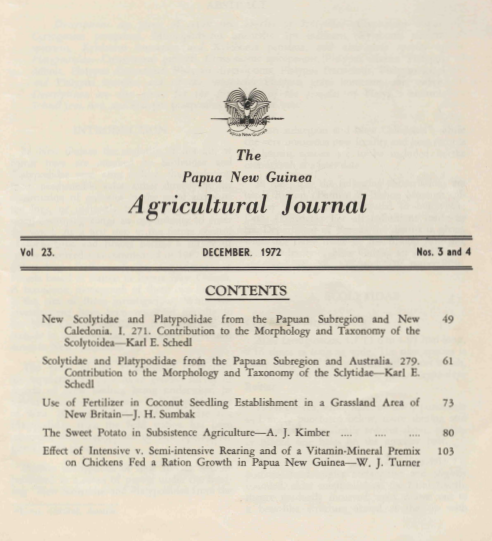The Sweet Potato in Subsistence Agriculture.
Keywords:
Sweet Potato, Subsistence, AgricultureAbstract
It is generally accepted that the sweet potato (Ipomoea batatas (L.) Lam.) originated in the Americas and was transported westwards across the Pacific, but there is as yet no firm evidence as to when or how it was introduced into Papua New Guinea. The significance of sweet potato varies according to an ecological partitioning of Papua New Guinea into six natural regions, but taking the country as a whole, it is quantitatively the most important crop in subsistence agriculture. A very wide range of morphological variation has been found to exist. Propagation, maintenance of gardens and harvesting are, with some exceptions, similar in all regions, but there are notable differences in mixed cropping practices and methods of land preparation, especially in the broad intermontane valleys of the main cordillera. Storage practices are not well developed, as there has generally been no necessity for this, and aspects of cooking and eating quality are fairly uniform throughout the country. As a subsistence crop, the sweet potato is relatively free of pests and diseases, though there are some exceptions. Sweet potato plays a major role in maintaining the domestic pig population and because of this it is important in the accumulation of wealth and in the establishment of prestige in subsistence social systems.
















